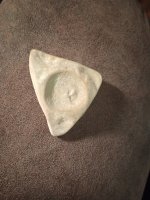firebird
Full Member
Wow, that looks familiar doesn't it? It's the kind of place you'd want to grab a few buckets of and pan it out!


 www.science.org
www.science.org


The Perseverance rover, which spent months traveling to Mars, could hardly have landed in a more interesting spot.
The Jezero crater — a dry, wind-scoured patch of Martian rock where the rover touched down in February — was once a lake bed fed by an ancient river with floods so powerful they could move boulders, scientists say.
Those findings, published last week in the journal Science, confirmed scientists’ suspicions that the crater contained a lake millions of years ago, and also suggests that this part of Mars had a warm, humid past with a more complicated water cycle than was known.
“There were rushing rivers here,” Katie Stack Morgan, a deputy project scientist of the Mars 2020 project and an author of the paper, said of Jezero’s landscape some 3.5 million years ago. “Jezero might have been a good place for life to exist and that environment evolved over time.”
Further studies could help researchers understand why the planet dried out and provide new clues about whether the planet once supported life.
New perspective — thanks to Perseverance — and geological detective work by scientists made these insights possible.
The rover, which transmitted imagery from the crater’s surface back to Earth, provided scientists new views that couldn’t be seen from space.
“What you think you’re seeing from orbit around Mars may not be what you see when you get into the crater at eye level,” Stack Morgan said.
The surface-level images supported scientists’ theory that Jezero once featured a deep lake.
Science | AAAS
Upvote
0



